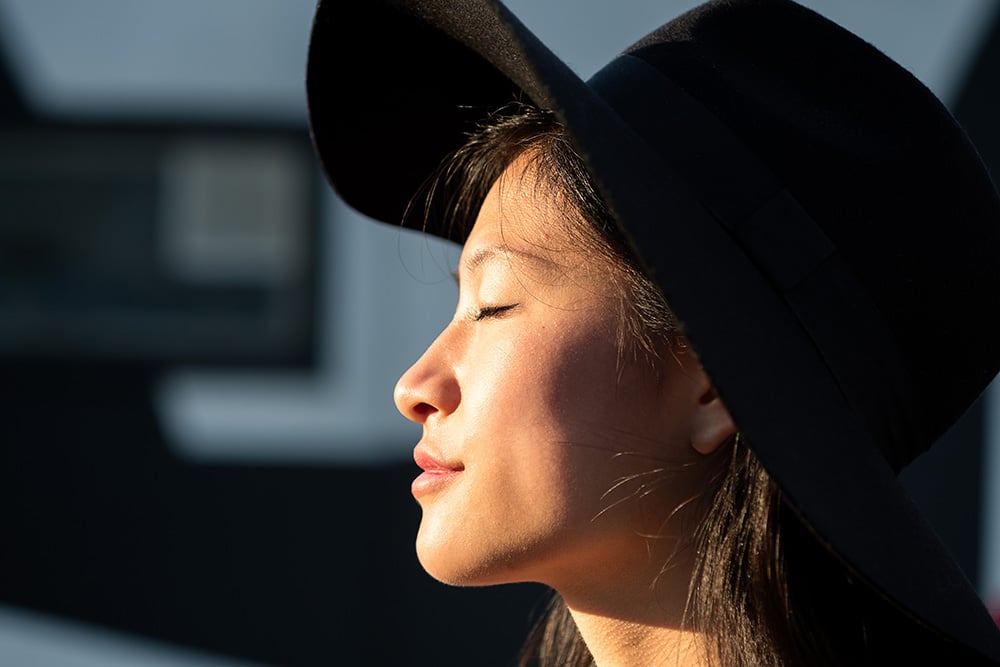
How Your Eyes Process Light
Light sensitivity—also known as photophobia—is a common condition that can cause discomfort or even pain when your eyes are exposed to light. It might seem surprising that light, which is essential for vision, can also cause such sensitivity. But when you consider the complex process your eyes go through just to interpret light, it starts to make more sense.
Before discussing the causes of photophobia and how to manage it, let’s consider how light helps us see. This background will help clarify why certain disruptions in the process can lead to light sensitivity.
Here’s a quick overview of how your eyes handle light:
-
Light reflects off the objects around you and enters the front of your eye.
-
It first passes through a thin layer of tears that coats and protects the eye.
-
Next, the light reaches the cornea, which begins focusing it toward the back of the eye.
-
From there, it moves through the aqueous humor and into the pupil, which adjusts its size to regulate how much light enters.
-
The lens further fine-tunes the focus, adjusting its shape depending on whether you’re looking at something near or far.
-
The light then travels through the vitreous humor, a clear, gel-like substance filling the center of the eye.
-
At the back of the eye, the retina and its light-sensitive cells (photoreceptors) convert the light into electrical signals.
-
These signals are transmitted along nerve fibers to the optic nerve.
-
Finally, the signals reach the brain’s visual center, where they’re processed into the images we see.
This entire process happens in mere milliseconds—fast enough to catch a 90-mph fastball or react to a flash of sunlight. Because so many components are involved, light sensitivity can stem from a number of sources within the eye, or even be a symptom of an underlying health condition.
What Causes Photophobia?
According to Medline Plus from the National Library of Medicine, some causes of sensitivity to light include:
- Eye inflammation
- Corneal abrasion or ulcer
- Wearing contact lenses too long or lenses that fit poorly
- Eye infection, diseases, injury or recovering from eye surgery
- Meningitis
- Migraine headaches
- Medications
Light Sensitivity Caused By Headaches and Brain Conditions
Up to 80 percent of people who have photophobia experience a migraine along with the sensitivity to light. According to the American Migraine Foundation, light sensitivity is a symptom of migraines. Not all headaches that cause light sensitivity are migraines—individuals who have tension and cluster headaches can also have sensitivity around bright lights.
If you experience chronic headaches due to light sensitivity, discuss your symptoms with a doctor as these may indicate a serious condition, including a brain injury or disease.
Tumors in the pituitary gland can also contribute to eye pain and headache issues. In some cases, the tumor produces hormones that can cause a variety of symptoms, including headache. In other cases, tumors can grow and begin putting pressure on the surrounding areas in the brain and nerves and can result in headaches and vision loss. Treatment depends on the symptoms; your doctor may suggest surgery or medicines to counteract excess hormones.
Medications and the Sun: Why Some Drugs Heighten Light Sensitivity
Some medications and supplements contain ingredients that may increase sensitivity to light, according to the Wisconsin Department of Health Services. In addition to photophobia, these drugs may induce a change in the skin that can cause an exaggerated skin burn, itching, scaling, rash, or swelling with exposure to ultraviolet light.
Some photosensitizing medications include:
- Antihistamines
- Furosemide
- Non-steroidal, anti-Inflammatory drugs (NSAIDs)
- Oral and estrogen-based contraceptives
- Quinine
- Sulfonamides
- Tetracycline
- Tricyclic anti-depressants
When Eye Conditions Cause Light Sensitivity
The American Academy of Ophthalmology says some eye diseases and conditions can cause photophobia, including:
- Cataracts
- Corneal abrasion
- Conjunctivitis or pink eye
- Dry eye
- Eye allergies
- Keratitis which is also caused corneal inflammation
- Uveitis, an inflammation of the eye
Because increased sensitivity to light is a symptom of many eye conditions, you should schedule an exam with your eye doctor as soon as you notice a marked increase in photophobia.
Coping with Light Sensitivity: Everyday Strategies That Help

Managing light sensitivity can be a matter of making lifestyle changes to protect your eyes from sunlight. One suggestion is to wait for a moment when transitioning from areas that have different levels of light. This helps the eyes adjust to the change and could lessen discomfort.
Other ways to minimize sensitivity include:
- Shielding your eyes from the sun while outdoors
- Wear polarized sunglass lenses to help cut down the sun’s glare
- All sunglass lenses should be UV-protected to protect eyes from harmful UV-light
- Or, choose light-activated tinted glasses to help reduce sunlight’s impact
- Wrap-around sunglasses may also prevent light from getting in through the sides
If your doctor has diagnosed photophobia due to dry eyes, try to keep eye drops on hand to minimize discomfort. However, if there are other underlying causes, such as cataracts or inflammation, your eye doctor may have other lifestyle recommendations.
Managing Photophobia: From Diagnosis to Long-Term Relief
Addressing the underlying causes of eye sensitivity is the best way to treat the condition. Whether light sensitivity accompanies migraines or whether it’s caused by an injury, disease or medication, your eye doctor is your best resource to minimize sensitivity to light.
If you need a qualified eye doctor to help you treat photophobia or manage the health of your eyes, contact the doctors at Barnet Dulaney Perkins. Take the next step toward better vision—schedule your eye exam today.

